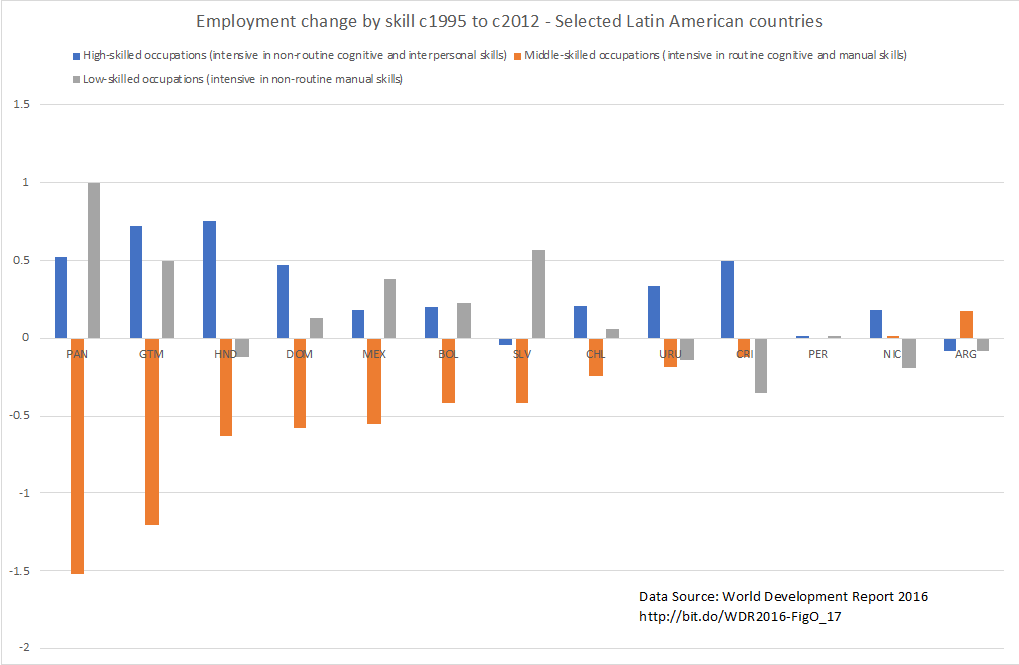Armando Barrientos, Emeritus Professor of Poverty and Social Justice, Global Development Institute
Social protection has played a leading role in government responses to Covid-19. Public programmes providing income and in-kind transfers to vulnerable population groups have been strengthened and enhanced to address the effects of the pandemic.
In low and middle income countries, the expansion of social assistance provided governments with a ready-made platform to reach and support low income groups. Social assistance infrastructure – social registries, implementation agencies, and local community links – facilitated fast and effective responses to the crisis. In addition to existing conditional income transfers and social pensions, several governments in Latin America implemented temporary income transfer programmes to support workers in informal employment. In high income countries, governments mobilised support for furloughed workers and the unemployed while social assistance transfers plugged the gaps left by welfare state retrenchment.
Despite this policy activism, the pandemic has laid bare existing deficiencies in social protection and social assistance (for the USA see here, for the EU here, and for LMICs here).
Looking ahead, the prominent role of public transfers has encouraged expectations that the pandemic could open the door for a reappraisal of investment in social protection. In high income countries, the salience of gaps in social protection and the perceived effectiveness of public transfers in the pandemic are expected to facilitate reforms to welfare states. In low and middle income countries, especially those reluctant to invest in social protection, the role of transfers in the pandemic response might serve as ‘proof of concept’ to demonstrate its effectiveness. In Latin America, ECLAC has called for new investment capable of building effective welfare states in the region.
Reasons to be cautious
There are reasons to be cautious about the likelihood of a pandemic driven social protection expansion.
First, social protection has an important but subsidiary role in addressing a pandemic. Saving lives in a pandemic requires, above all, an effective health care system with a large public health component. Social protection can be effective in mitigating the economic effects of the pandemic, and in supporting health policy, but my guess is that post-Covid-19 policy-makers will be prioritising improvements to health care systems.
Second, insurance schemes have limited effectiveness in a pandemic. They are most effective in addressing idiosyncratic risk, i.e. risk affecting a fraction of the population. In such conditions, a small premium collected from each participant is sufficient to compensate the unfortunate few. Pandemics, on the other hand, affect a large share of the population. It is unlikely that post-Covid-19 policy-makers will prioritise insurance solutions for future pandemics.
Third, social assistance transfers have come to the fore in the pandemic in support of government-imposed restrictions on social and economic interaction. Additional public transfers have been aimed at facilitating compliance with these restrictions. Public transfers have been broader and more generous when supporting lockdowns. As a consequence, most transfers introduced and implemented in Latin America during the pandemic are time limited.
Fourth, vaccine programmes dangle the prospect of a lifting of restrictions on economic activity in the medium term. In fact, in many low and middle income countries economic activity has continued throughout with disruption. It is too early to speculate on the shape of economic recovery, except for the fact that it will start from a level below that at the outset of the pandemic and that it will vary across countries. Economic disruption and lost output are sure to have impacted fiscal revenues and public debt levels. Few if any countries will start their recovery with the fiscal space needed to kick off investment in social protection.
Fifth, the pandemic has deepened democratic deficits. This is especially true in countries with democracy reversals where aspiring autocrats have taken full advantage of emergency powers to further suppress political contestation. History teaches us that a pre-requisite for significant expansions of social protection is the presence of renewed social contracts. But establishing or renewing social contracts will be much harder for countries with democratic deficits and political polarisation.
Covid-19 and indirect effects
Whilst remaining cautious about the likelihood that the pandemic will ensure a social protection epiphany, we should not rule out indirect effects. It is possible that by accelerating or delaying pre-existing trends the pandemic might help usher in conditions favourable to a social protection expansion.
The pandemic has confirmed indeed the fundamental role of the state in society. Unavoidably, the responses to the pandemic have been led and coordinated by government agencies, and where they haven’t done so the consequences are transparent. This applies to a broad range of sectors, health care and procurement, energy, transport, food security, employment protection, education, and others. The pandemic has underlined governments’ role in regulating and supporting markets, most notably in insurance, finance and in research and innovation associated with vaccine development.
Changes in the structure of employment are a primary driver of social protection reform. Going into the pandemic, the main focus was on the polarisation of employment by skill, the growth of employment in high and low skilled occupations combined with a decline in employment in routine middle skilled occupations. These trends share some responsibility for the pushback against globalisation in high income countries, marked by the protectionist turn in the USA. Research provides some evidence on the hollowing out of employment by skill in Latin America, albeit with variation across countries (See Figure below). The issue is whether the pandemic will delay or accelerate these trends. Jose Antonio Ocampo notes that “in terms of external shocks, this is one of the least acute crises in the region’s history”. To the extent that vertical fragmentation brought in by expanding global value chains survives the pandemic and perhaps prospers in the recovery, these employment trends will continue. They have consequences for the shape of social protection systems in the region as, historically, they have targeted routine middle skilled occupations.
There is consensus around the view that the pandemic will result in higher levels of domestic poverty and inequality, reversing positive trends form the last two decades. However, available estimates for the impact of the pandemic on social indicators rely on projections from pre-pandemic data. Time will tell. Rising poverty trends are bound to generate pressures for government action.
There is scarce information on whether the pandemic will strengthen or weaken grassroots organisations. Protests and social media campaigns suggest significant levels of dissatisfaction with incumbents, reinforcing negative public perceptions of the political class and political polarisation. The pandemic will ensure that social policy will figure prominently in incoming elections.
Assuming for the sake of argument that economic recovery does result in a potential expansion of social protection in Latin America. What should be the main priorities? Proposals offered to date lack definition, perhaps understandably in the middle of the pandemic. ECLAC‘s call for welfare states and basic income schemes echo longstanding aspirations and the flavour of the day respectively. They need careful consideration.
- Armando Barrientos recently produced the Social Assistance Map Explorer which supports interactive queries on the number of participant households and individuals (reach) and the financial resources (resources) associated with social assistance programmes by type for the period 2000-2015. The project, which is the first of its kind, collected and harmonised data on social assistance programme design and implementation, institutional development and financial resources. Programme data can be aggregated at country and region level. Users can also download the projects open access dataset.
- Want to learn more about social assistance programmes? Find out more about our MSc in International Development: Poverty, Inequality and Development.
Note: This article gives the views of the author/academic featured and does not represent the views of the Global Development Institute as a whole


